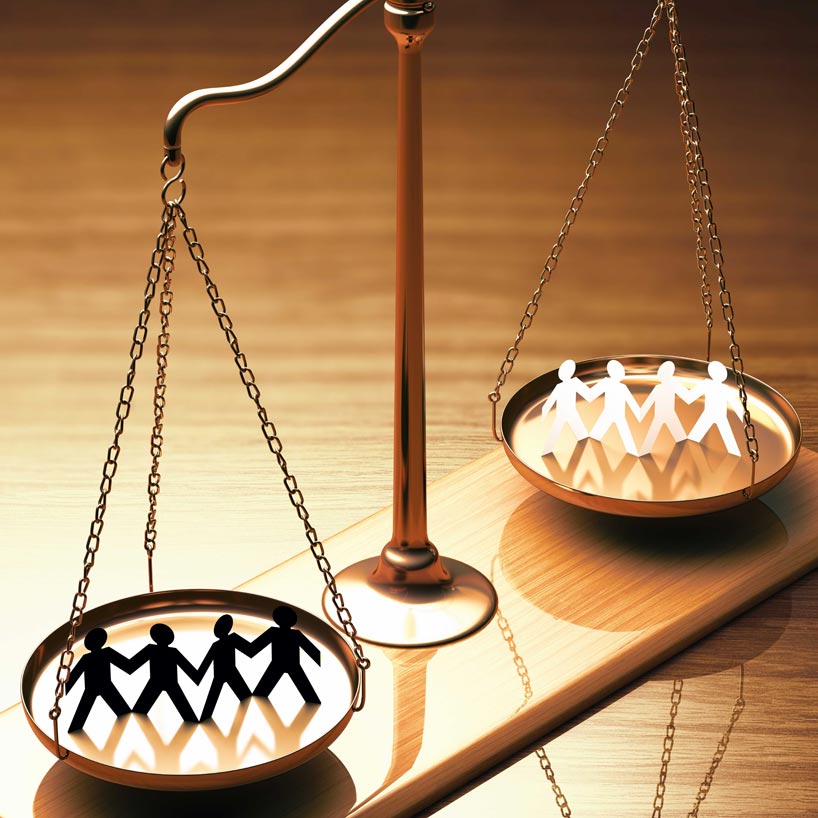How hidden biases affect public opinion on sentencing

Photo: Biases have resulted in "over-imprisonment of black and Indigenous Peoples, most notably in Ontario," say researchers Anne-Marie Singh and Jane Sprott. Photo: iStock.
Many things can influence how the public views a criminal sentence, from the offender's previous record to the nature of the crime. But two Ryerson University researchers have discovered another factor affects how people think an offender should be punished: his racialized identity.
In the first Canadian study of its kind, criminologists Anne-Marie Singh and Jane Sprott investigated the role an offender's ethnicity plays in public opinion of criminal sentences. Their paper, Race Matters: Public Views on Sentencing, was published in July in the Canadian Journal of Criminology and Criminal Justice.
Over the past several years, the researchers note, Canada has seen the introduction of numerous mandatory minimum penalties as part of the former Conservative government's "tough-on-crime" agenda. The legislation, the previous government argued, had widespread public support. Indeed, while the Department of Justice is surveying Canadians' latest thoughts about the criminal justice system through an online poll, 60 per cent of respondents in a 2011 survey that asked about sentencing reported they believed sentences were "not severe enough."
That perspective is problematic, says Singh. "If the public has consciously disguised biases, then government policies will reflect those biases. And the impact has been the drastic over-imprisonment of Black and Indigenous Peoples, most notably in Ontario," she says.
With funding from Ryerson and the Social Sciences and Humanities Research Council of Canada, Singh and Sprott used sentencing as a lens to explore the broadly held belief that racism does not exist in Canada – or at least not to the same degree as in the United States – because Canadians are considered diverse, tolerant and accommodating. In particular, the researchers were curious if the racism would be overt or covert, working through negative stereotypes or perceptions.
Singh and Sprott developed four scenarios involving a male offender (with and without a criminal record) who commits an armed robbery. The brief vignettes were identical, except for the racialized identity of the offender.
A research assistant then used the scenarios to poll 500 Torontonians on their views toward sentencing. To maintain impartiality, the assistant didn't know the order of the vignettes before approaching people on the street to participate in the research.
The goal of the survey was to elicit respondents’ sentencing preferences (a prison sentence or a community-based sanction) and their perceptions of how dangerous and guilty an offender is, and his risk of committing another crime. Overall, 27 per cent of respondents thought the "Black" offender was "extremely dangerous," compared to only 17 per cent who felt that way about the "white" offender. The perception of dangerousness was then used to justify harsher sentences, say the researchers. But there was also a small independent effect of the offender's racialized identity after controlling for dangerousness and other factors such that the Black offender still received harsher sentences than the white offender.
"We tend to think only of Canada's multiculturalism, but this research serves as a reminder: we do have racism here. It's more subtle, and we don't talk about it, but people do link racialized identity to other aspects of an offender," says Sprott.
Moreover, since people may not be consciously aware of their racial biases, it will be difficult to change perceptions. So, the researchers conclude, Canadian policy-makers must be careful when making decisions that are based on public opinion – because the resulting policies may actually reinforce racism and the overrepresentation of certain racialized groups throughout the criminal law system.
Here are the two vignettes used in the research project:
- Darnell Johnson [or Scott Johnson] (age 35) pled guilty to a robbery with a firearm. At 10 p.m. he entered a convenience store armed with a handgun and demanded all the money from the cash register. The teller gave him all the money and he left the store. He was picked up by police down the street from the convenience store and all the money was recovered. At his sentencing hearing the Crown emphasized that this was a serious offence. Darnell's [or Scott's] lawyer emphasized that this was his first offence and no one was injured. He has also been sending money to his parents in Jamaica [or England] to help with some medical costs and for the past few years has been employed part-time as a dishwasher.
- Darnell Johnson [or Scott Johnson] (age 35) pled guilty to a robbery with a firearm. At 10 p.m. he entered a convenience store armed with a handgun and demanded all the money from the cash register. The teller gave him all the money and he left the store. He was picked up by police down the street from the convenience store and all the money was recovered. At his sentencing hearing the Crown emphasized that this was a serious offence and that Darnell [or Scott] has two previous convictions, one for an assault and another for selling a small quantity of marijuana. Darnell's [or Scott's] lawyer emphasized that no one was injured in the offence and that he has been sending money to his parents in Jamaica [or England] to help with some medical costs. For the past few years has been employed part-time as a dishwasher.